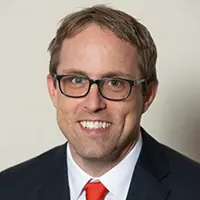
Two Fundamental Truths About Banking
Banking strategies are speculative until they survive a downturn.
When business is booming and loan losses are low, banks try new things. Sometimes those things work; sometimes they don’t work. It’s impossible to know until the economy takes a turn for the worse. “You only find out who is swimming naked when the tide goes out,” says famed investor and Berkshire Hathaway chairman and CEO Warren Buffett.
In 1974, Bill P. Jennings and a group of investors took control of Penn Square Bank, a small retail-focused bank located in an Oklahoma City shopping mall. They planned to turn it into a European-style merchant bank, originating loans that were then sold to other banks.
The plan worked brilliantly – until it didn’t. Between 1974 and 1981, Penn Square grew from $35 million in assets up to $525 million in assets. It also packaged and resold $2.5 billion worth of energy loans to bigger banks around the country.
But then oil prices plummeted, causing Penn Square’s fortunes to take a turn for the worse. In 1982, it was seized by the Federal Deposit Insurance Corp. after word got out that it was sitting on a mountain of bad loans.
For decades, Hawaii benefited from a consistent inflow of Japanese capital, which fueled the economy and drove up the price of real estate. This propelled the state’s biggest bank, Bank of Hawaii, to industry-leading performance year after year.
When this capital inflow reversed in the early 1990s, following the collapse of the Japanese real estate and stock markets, Hawaii’s economy settled into a protracted economic downturn. Bank of Hawaii responded by looking elsewhere for growth, expanding its operations throughout Asia and the U.S. mainland.
By the late 1990s, in the wake of the Asian financial crisis, Bank of Hawaii’s performance began to feel the effects of its over-ambitious expansion. Its profitability, credit quality and regulatory ratings all suffered.
So, in 2000, it brought in a new CEO who refocused the bank on its bread-and-butter business in Hawaii. Now, two decades later, Bank of Hawaii has reclaimed its place atop the industry for performance – including through the financial crisis.
Analysts and commentators in every generation proclaim the death of traditional banking, but banks and their branches are still here.
In 1928, Union Bank and Trust began offering “Banking at Home” – “a revolutionary service that allowed business customers to conduct their banking by mail,” as the bank notes in a recently published history of the institution. By 1954, approximately 50% of its deposits were made that way.
In the mid-1970s, Citigroup became the first bank in the United States to deploy ATMs on a massive scale. It adopted the strategy because its executives “doubted that the future of consumer banking lay with the branches,” wrote Phillip Zweig in a biography of former Citi CEO Walter Wriston.
In 1997, U.S. Bancorp of Portland, Oregon was acquired by First Bank System, a Minneapolis-based bank led at the time by the insatiably acquisitive Jack Grundhofer. “Two years ago, I thought we could survive,” said then-U.S. Bancorp CEO Gerry Cameron. “Then I started to realize how many technology projects we had to delay because we didn’t have enough resources.”
Meanwhile, between 1954 and 2017, the number of commercial bank branches in the United States climbed from 6,346 up to 78,796, according to the FDIC. This trend crested in 2012 and has since tipped downward. But while the biggest and most sophisticated banks may be trimming their least productive branches, they’re also busy building new ones. In 2018, JPMorgan Chase & Co. announced that it would build 400 new branches in cities like Charlotte, North Carolina; Kansas City, Kansas; Minneapolis; and Pittsburgh.
This isn’t to say that digital banking hasn’t led to a marked decline in branch visits, because it has. This also shouldn’t be interpreted as a call to complacency, because it isn’t. It’s a reminder instead that banks have successfully dealt with changes to their distribution systems in the past, and it flies in the face of history to think that they won’t be able to do so again.



